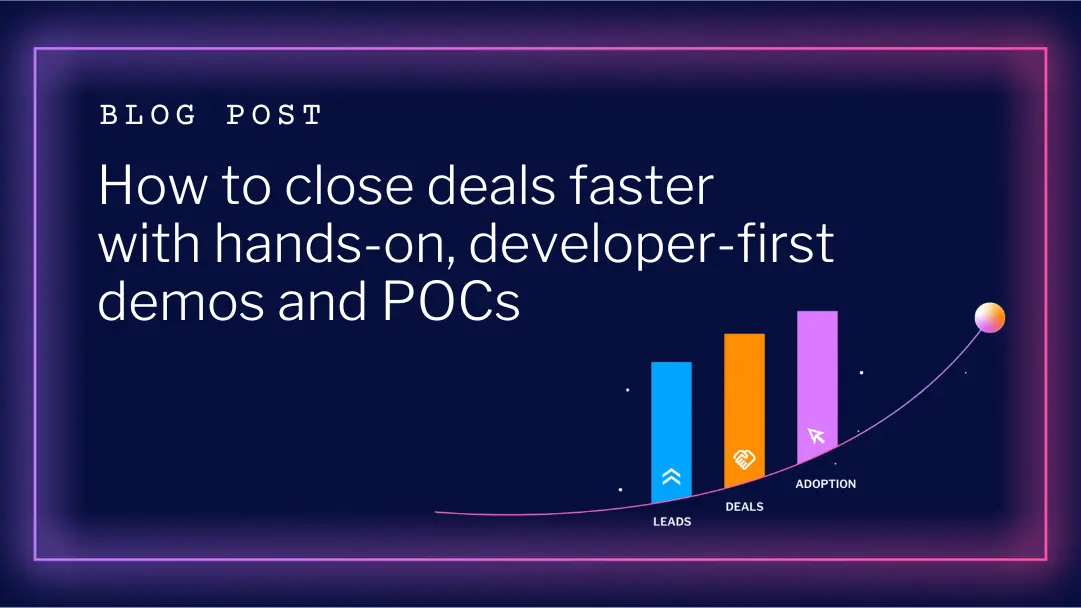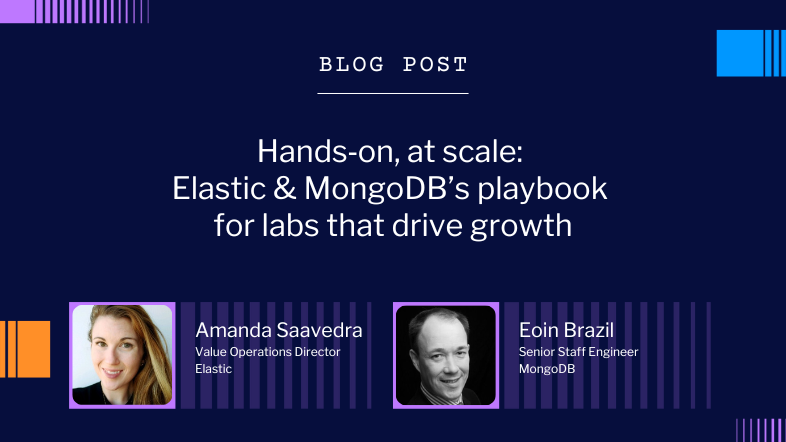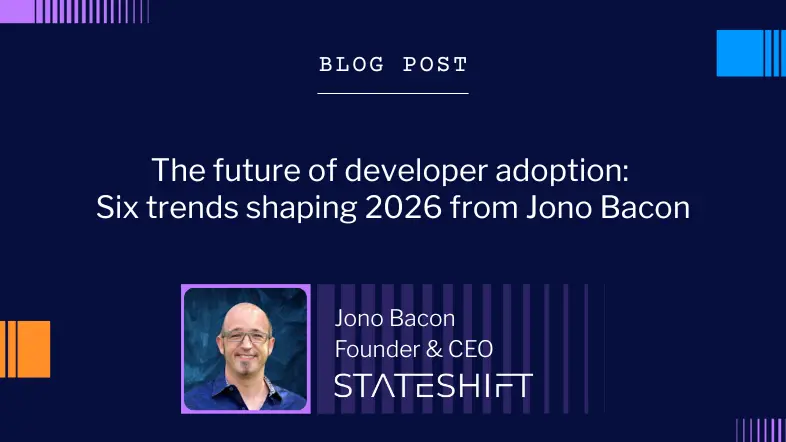Driving developer adoption in 2025: Insights, strategies, and expert advice

Developer adoption is becoming a critical differentiator in 2025. With artificial intelligence transforming workflows, developer roles expanding, and evolving expectations for onboarding and support, organizations must adapt their strategies to connect with technical users effectively.
In our latest Instruqt webinar, The State of Developer Adoption 2025: Tools, Trends & Tactics, experts Jono Bacon from Stateshift, Mary Thengvall from Camunda, Adam DuVander from EveryDeveloper, and moderator Sean Lauer from Instruqt shared key insights on preparing for this changing landscape.
Below, we unpack essential insights, practical strategies, and actionable advice your product, marketing, and DevRel teams can use to succeed.
Understanding developer needs: Empathy-driven strategies
Today's developers are decision-makers, not just end-users. Winning their trust requires genuine empathy and understanding of their real-world challenges.
“Talk to individuals, not just accounts. If people aren’t excited about your product, how will the account ever be?” —Mary Thengvall, Program Manager for Strategic Initiatives at Camunda
Winning developer trust means fostering meaningful, authentic relationships—one conversation at a time. Developer relations (DevRel) is evolving from mass communication to intentional, value-driven engagement, and building relationships that reflect your users' real problems is what turns them into advocates.
Prioritize developer experience over tools
Even the best-in-class tools will not win adoption if the overall developer experience is clunky. Seamless onboarding, fast time to value (TTV), and contextual, human-driven support matter most.
“Everyone talks about platforms, but the most impactful developer engagement is still about human contact—at scale,” —Jono Bacon, Founder & CEO at Stateshift
AI-powered automation and personalized engagement can significantly enhance this process. However, over-automation can undermine trust, which remains fundamental to successful developer adoption.
But there's a warning, too: over-automating breaks trust.
“There’s going to be a wave of AI fakery,” Jono noted. “The companies that win will be the ones grounded in real trust and real interactions.”
Developer advocacy starts by solving real problems
True developer advocacy happens organically when your product solves critical problems.
Mary explained, "Advocates aren’t always visible—they might be hosting meetups, answering questions, and advocating internally within teams."
Recognizing and nurturing these various forms of advocacy—public and private—ensures broader and deeper developer support.
"Sometimes fewer forum questions mean your documentation is effective," Mary noted.
Your most powerful advocates might be invisible to your CRM. That’s why it’s crucial to design programs that recognize different forms of advocacy—from public speakers to silent supporters.
Measuring developer engagement: Quantitative & qualitative metrics
Effective measurement goes beyond superficial metrics like pageviews. It involves deeper insights into product adoption, user satisfaction, and customer retention.
Combine quantitative metrics (active users, conversions) with qualitative feedback (user quotes, testimonials). This approach offers executives a holistic view of your DevRel impact.
“A quarterly report with developer feedback plus KPIs is way more powerful than charts alone,” Jono emphasized.
Expanding developer personas: Adapting to new audiences
The definition of "developer" is broadening, encompassing non-traditional roles enabled by low-code and AI-assisted tools.
"By 2030, more people will build solutions without writing traditional code," Adam DuVander, Founder at EveryDeveloper predicted.
Your onboarding, documentation, and community communication strategies must evolve accordingly. Simplify complex concepts, engage in accessible language, and foster inclusive learning communities.
"We’re building trust, not just tech," Jono emphasized.
Preparing for the future: Integrated approaches
Organizations must adopt a dynamic, integrated approach to developer engagement. Developer adoption is no longer about isolated campaigns—it requires interconnected experiences.
- Invest in interactive learning resources, continuously updated documentation, and responsive, real-time feedback loops. These elements accelerate problem-solving and foster deeper user connections.
- Collaboration across marketing, sales, and developer relations is essential. Eliminating departmental silos ensures coherent messaging, consistent experiences, and smoother developer journeys.
- Data-driven decision-making is critical. Analytics should be utilized not only for marketing but also for product development, customer support interactions, and educational resources.
Winning developer adoption in 2025: Practical takeaways
Developer adoption is a comprehensive strategy—not just a metric. Companies must deliver intuitive, hands-on product experiences that solve real-world problems quickly and effectively.
“See yourself as a translator between the developer’s problem and your product. When you solve that puzzle, everything else follows," —Adam DuVander, Founder at EveryDeveloper
Ready to drive developer adoption?
At Instruqt, we help software companies connect with developers through real-world, interactive experiences. Our platform makes product adoption faster, easier, and more impactful—so developers get value from day one. Take a self-guided tour of Instruqt today!







